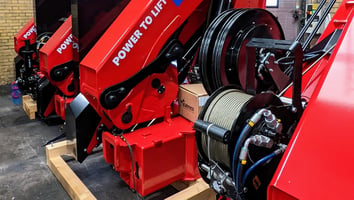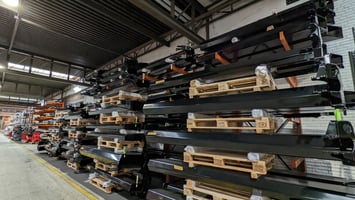Are you tired of struggling with manual and disconnected systems for creating quotes for your...
Top 10 reasons why CPQ projects fail
The CPQ does not have backing from senior management
The CPQ process is spread all over the enterprise and touches many groups including sales, IT, engineering, marketing and order management. The planning and development of a CPQ solution must involve all of these organizations and must address the requirements of each group.
CPQ is a knowledge-based tool, and it's never better than the actual knowledge and data in the tool. Usually the product expert or senior sales rep who is too busy working with deals, is the person most needed for this type of project.
Backing from senior management is essential, to allow for prioritization of the implementation of the CPQ over the day-to-day business tasks for all these organizations, including the busy experts.
Scope creep
Aiming at 100% of sales done with CPQ
We recommend aiming at 80-95% of the configurations done automatically by the CPQ software, and allowing for some manual work for the rest. The reason is that there is typically an 80-20 rule in regards to implementation, where the last 20% of the configuration complexity will take 80% of the implementation time of the tool.
It is much better to focus on 80% of the sales initially in the project, and to make sure there is a ready process for the other 20% of the sales. If the project is a success, why not aim higher in the next phase of the project?
Bad data quality
You might need to structure and systemize your product data before selecting or implementing sales configuration software. If you don’t, the implementation will probably take much longer than expected, and changes of the tool will be done multiple times back and forth before being able to release.
Too few or too many integrations
Hence it is important to prioritize integrations, and to allow for manual integration in the early phases of the project. Do your prices reside in ERP? Are they only changed every 6 months? Can you export them to Excel initially, to get the project going? If you can get a manual integration to work, try to push the implementation work to the future.
However, from a similar perspective pushing integrations to the future which require a large amount of manual work is also a bad idea. The manual work will cost money and may cause update errors.
When selecting a vendor, make sure they have standard integrations to the essential systems you need to integrate to. Focus only on crucial integrations in the early phases to allow for a quick return on investment. Add the additional integrations in later phases, and do separate ROI calculations for the specific integrations.
The configurator cannot solve the configuration problem
It is important to select a configurator that is able to solve complex configuration problems, an incorrect selection of sales configurator may lead to being force to simplify the configuration problem too much and hence giving incorrect configurations or prices to the sales person.
Too much focus on tangible products
A typical product does not only consist of hardware, but also other intangible products. It’s not uncommon for companies to have higher margins on services, spares and extended warranties. These products should not be forgotten when implementing the configurator – because without these the configurator is not complete. And if the configurator is not complete, the deals will either be missing these high margin products, or the sales will simply not use the CPQ due to the missing products.
The CPQ isn’t easy to use
Your solution should simplify a complex process, not replace one complex process with another. There are often tradeoffs in functionality when simplicity is the primary goal. Make sure your CPQ is achieving a good balance between these two elements.
The CPQ doesn’t focus on the key users
The most important task of a CPQ is to help the sales person create a correct, competitive and valid quote quickly – and what that means exactly is different for different companies.
Makes sure key people from the sales department are involved in the selection and development process to insure that their requirements are covered.
No focus on data maintenance
It's vital that master data maintenance requires minimal amount of changes in the CPQ software. It is also equally important that an organization is set up to be responsible for the maintenance of the software, because with even a minimal amount of maintenance it still needs to be tested and validated.





